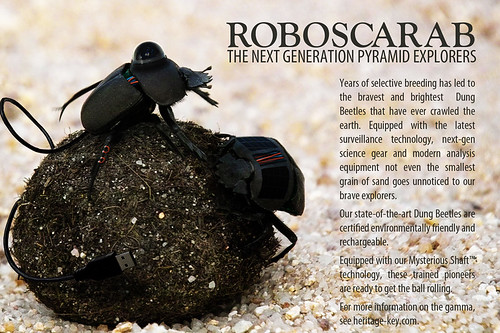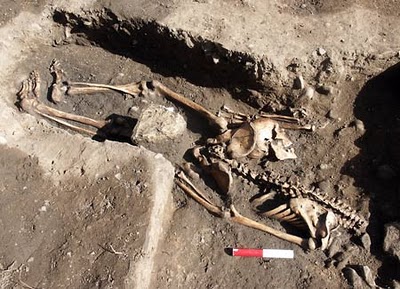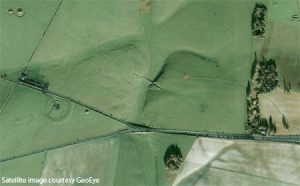 There are currently two* ‘explorer robots’ active in Egypt:the Japanese robot researching the Osiris Shaft – it got as far as it could though, and a ‘snake robot’ might be needed to explore further – and the Leeds robot taking a more thorough look at the shafts in the the Great of Cheops. Although the ‘Leeds robot’ just began the actual investigation of the secret doors last week, Dr. Hawass revealed at his lecture that on the 31th of July the Leeds team already had a major breakthrough. But that was all information Dr. Zahi was willing to share (except that they’ll be taking a look at the other shafts also). No hint at what kind of ‘major breakthrough’ this could be, nor did he share any photographs, video or even just 3D sketches of the robot.
There are currently two* ‘explorer robots’ active in Egypt:the Japanese robot researching the Osiris Shaft – it got as far as it could though, and a ‘snake robot’ might be needed to explore further – and the Leeds robot taking a more thorough look at the shafts in the the Great of Cheops. Although the ‘Leeds robot’ just began the actual investigation of the secret doors last week, Dr. Hawass revealed at his lecture that on the 31th of July the Leeds team already had a major breakthrough. But that was all information Dr. Zahi was willing to share (except that they’ll be taking a look at the other shafts also). No hint at what kind of ‘major breakthrough’ this could be, nor did he share any photographs, video or even just 3D sketches of the robot.
As I’m quite impatient – I love ‘live reporting’ Brooklyn Museum-style – and quite curious as to what a new generation of ‘ explorer’ robots would look like, I decided not to wait until December 2009 to get the the full picture (although I’d be happy to see just one image) on the robot developed by the University of Leeds.
Looking at the most recent developments in robotics, bio-tech, electronics and surveillance technology, and taking into account the recent trend to focus more on ‘Egyptian Egyptology’ – basing the draft on one of the symbols associated with ancient Egyptian culture, the scarab – any design for a 21st century robot archaeologist should look somewhat like this:

(No Dung Beetles were hurt during the design of the RoboScarab.)
There are two slightly different editions of the RoboScarab. The male version is equipped with a USB 2.0 connection cable so data can be easily retrieved whilst the beetle is being recharged. The female version runs on solar power, and still has some communication issues as it seems to generate random strings of data. An added bonus to the use of dung beetles, is that outside of the field season, they can still be easily put to use for recycling. But the most important feature in this form of versioning is that if you have both a female and a male RoboScarab, you can breed – and thus sell – little RoboScarabs yourself. For those that consider this a lousy business plan, do note that one can still charge for maintenance and training of RoboScarabs as well as support.
Is this close to the actual design for the robot explorer created with the help of the Leeds University? We won’t know until Dr. Zahi reveals the Leeds robots and it’s discoveries: “In this coming December, Im promising all of you that the secrets of the will be revealed for the first time.” In the meantime, I’ll return to the drawing board to do some suggestions for the ‘snake robot’. 😉
*We’re not taking the Transformers into account, and the UPUAUT robots as well as the ‘robe climber’ have since long retired from their research job.



